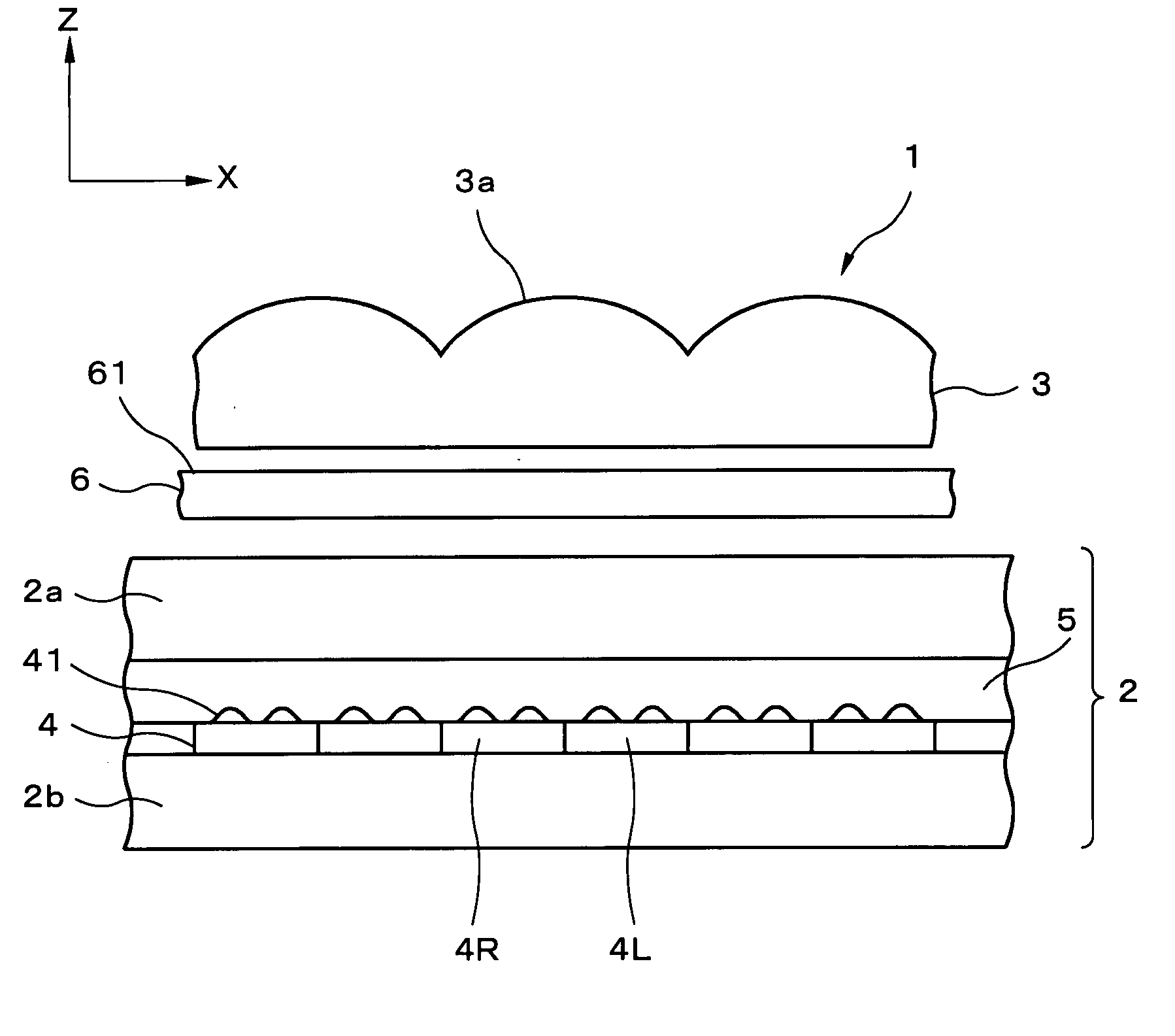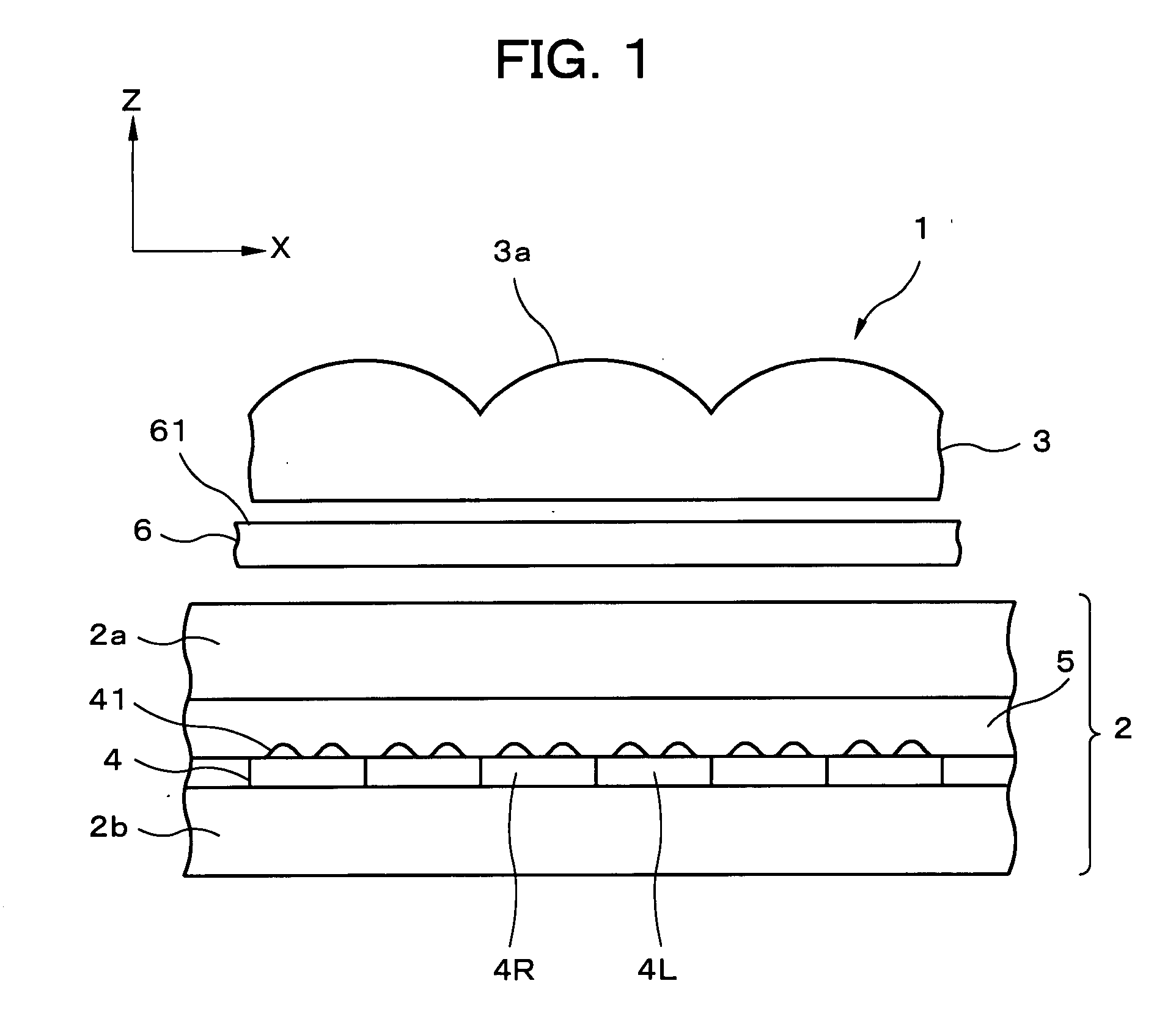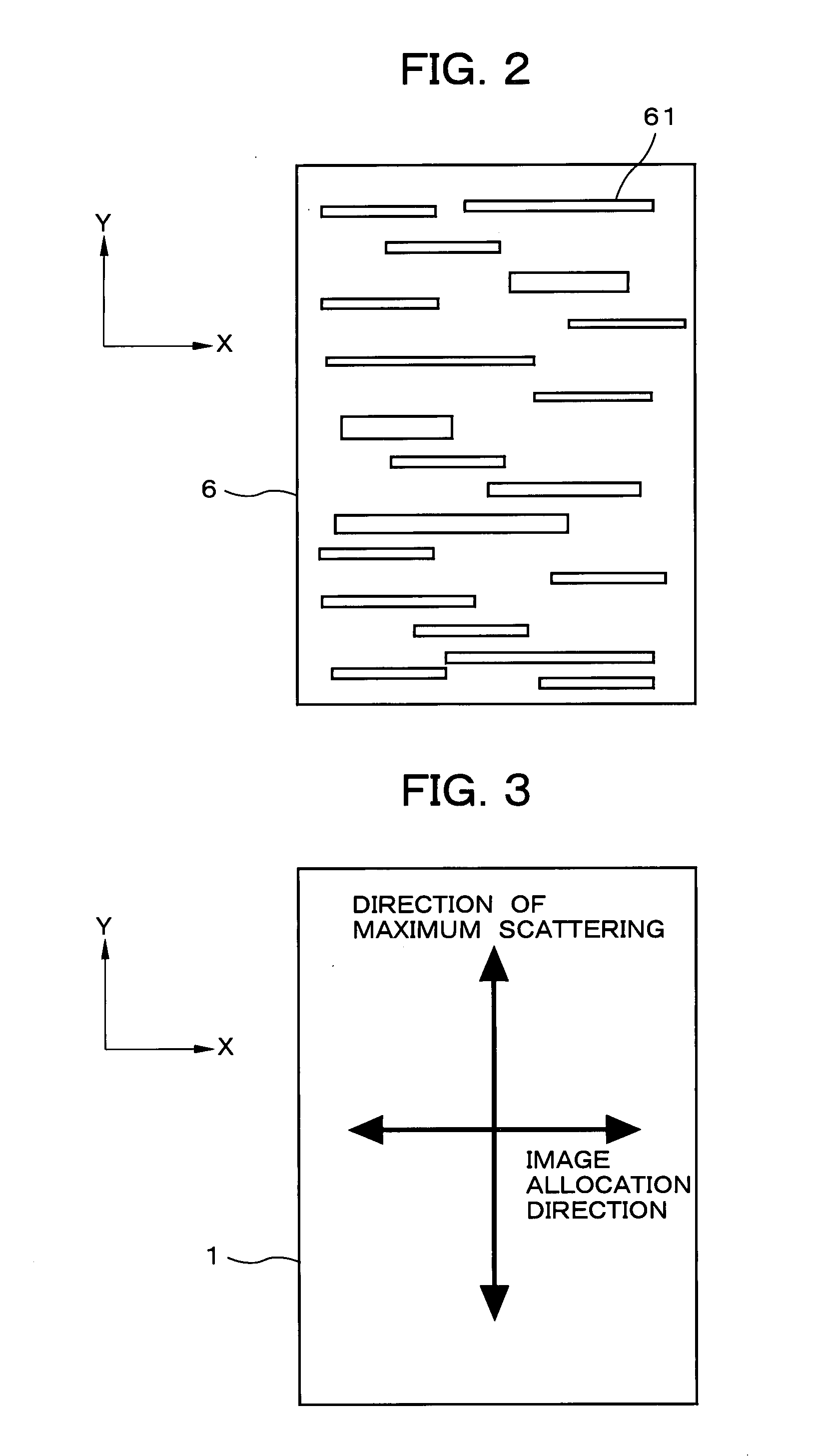Display device, terminal device, display panel, and optical member
a technology of display panel and display panel, which is applied in the direction of optics, instruments, optical light guides, etc., can solve the problems of inability to see the observer's right eye, blockage of pixels for displaying the left-eye image, and inconvenient eyeglasses in these systems, so as to minimize the reduction in the quality of transmissive display, increase image quality, and increase image quality
- Summary
- Abstract
- Description
- Claims
- Application Information
AI Technical Summary
Benefits of technology
Problems solved by technology
Method used
Image
Examples
embodiment 1
[0110] Next, the display device, terminal device, display panel, and optical member according to embodiments of the present invention will be specifically described hereinafter with reference to the accompanying drawings. The display device, terminal device, display panel, and optical member of the present invention will first be described. FIG. 1 is a sectional view showing the display device according to the present embodiment; FIG. 2 is a top view showing the anisotropic scattering sheet shown in FIG. 1; FIG. 3 is a top view showing the relationship between the image allocation direction of the image allocation part, and the scattering direction of the anisotropic scattering sheet in the display device shown in FIG. 1; and FIG. 4 is a perspective view showing the terminal device of the present embodiment.
[0111] As shown in FIG. 1, the display device according to Embodiment 1 uses a reflective liquid crystal display panel 2 as the display panel, and the reflective liquid crystal ...
embodiment 2
[0169] Specifically, in the reflective liquid crystal display device 12 of the present embodiment as shown in FIG. 17, the anisotropic scattering glue 63 is applied to the surface opposite the surface on which the cylindrical lenses 3a of the lenticular lens 3 are formed, and the lenticular lens 3 and the reflective liquid crystal display panel 2 are affixed together by the anisotropic scattering glue 63. The anisotropic scattering glue 63 is a glue in which materials that are worked into fibers or rod shapes are oriented and dispersed, and the materials each have different refractive indices, for example. Aspects of the present embodiment other than those described above are the same as in
[0170] In the present embodiment, the use of the anisotropic scattering part makes it possible to prevent a reduction in display quality due to the lenticular lens and the concavo-convex structures of the reflecting panel without significantly compromising the image allocation effects of the lenti...
embodiment 3
[0172] Specifically, in the reflective liquid crystal display device 13 of the present embodiment as shown in FIG. 8, the base material of the lenticular lens 32 has anisotropic scattering, whereby the lenticular lens 32 itself has anisotropic scattering capability. Suitable methods that can be used to fabricate a base material having anisotropic scattering capability include a method for orienting and dispersing fibrous or rod-shaped materials having different refractive indices when the base material is fabricated, a method for extending a base material that has isotropic scattering so as to make the scattering anisotropic, and other methods. A hot embossing method, for example, may be used to transfer a lens shape to a base material having anisotropic scattering capability that is fabricated according to the aforementioned methods in order to fabricate a lenticular lens 32 that has anisotropic scattering. The lenticular lens 32 is fixed to the reflective liquid crystal display pa...
PUM
 Login to View More
Login to View More Abstract
Description
Claims
Application Information
 Login to View More
Login to View More - R&D
- Intellectual Property
- Life Sciences
- Materials
- Tech Scout
- Unparalleled Data Quality
- Higher Quality Content
- 60% Fewer Hallucinations
Browse by: Latest US Patents, China's latest patents, Technical Efficacy Thesaurus, Application Domain, Technology Topic, Popular Technical Reports.
© 2025 PatSnap. All rights reserved.Legal|Privacy policy|Modern Slavery Act Transparency Statement|Sitemap|About US| Contact US: help@patsnap.com



